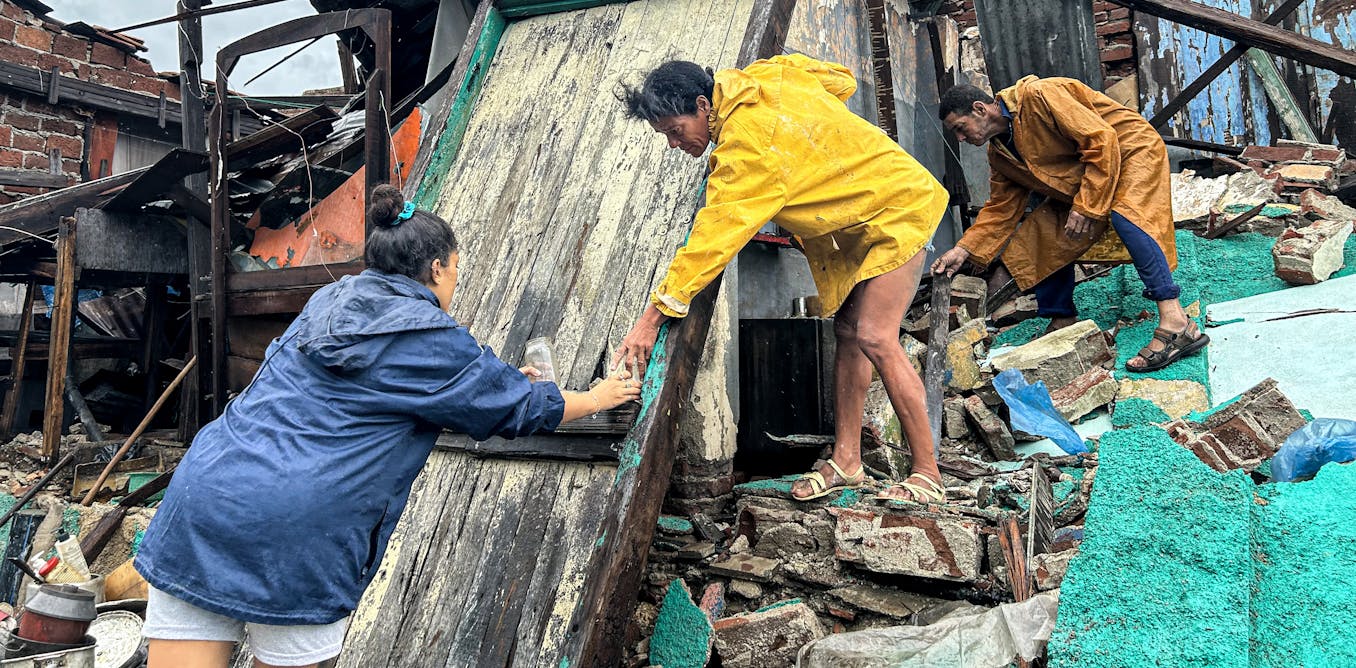At the center of Mumbai is a sterilized development called the Bandra-Kurla-Complex (BKC) that was built over marshy land and surrounded by (now) depleted rivers. Today, it commands the highest real estate rates in India, and continues to develop as the commercial colossus within the country’s financial capital, home to the largest number of billionaires in Asia.
And at the center of the BKC is the Nita Mukesh Ambani Cultural Centre (NMACC), opened last year by art patron Nita Mukesh Ambani, whose husband, Mukesh, sits at number 9 on the Forbes “World Billionaires List.” After a debut show dedicated to TOILETPAPER, the magazine and creative studio founded by Maurizio Cattelan and Pierpaolo Ferrari, and a second show on American Pop art, the NMACC has shifted its focus closer to home, with its third exhibition “Liminal Gaps” (through June 9), focusing on four contemporary Indian artists and collectives as a way to reshape “perspectives on India’s evolving cultural identity,” according to the catalog.
In explaining the exhibition’s approach to liminality, Mafalda Millies, one of the show’s curators and a cofounder of TRIADIC, a self-described “creative house and cultural engine,” said, “we aren’t from here and wanted to understand India in today’s time and space. We noticed that art in India has always had a historical element while shedding light on the present. India seems to thrive in this liminality between the past and the future and that is how the theme came to us.”
The exhibition takes over the four floors of NMACC’s Art House venue, with each artist getting their own floor: Ayesha Singh, Raqs Media Collective, Asim Waqif, and Afrah Shafiq (from the ground floor up). With the works on view, the show insists on sensorial and cognitive participation from its audience, asking them to occupy the museum’s many lines and nooks—to touch, click, scroll, play, listen, read, think, scribble, walk, stop, chuckle, rest, and most important, take pictures.
Roya Sachs, a cofounder of TRIADIC and its artistic director, said the group wanted to approach this exhibition in an untraditional format, as it had with the TOILETPAPER show and with its editions of the Format Festival in Bentonville, Arkansas. “We come from different worlds—art, performance, production—and our ethos has been to mix mediums and people,” she told ARTnews. “The contemporary art world is a disruptive space where we increasingly witness interdisciplinarity: choreographers working with visual artists, fashion designers creating sculptures, or sound engineers collaborating with painters. We are always trying to make bridges, take risks, and find magic in the unexpected.”
“Liminal Gaps” begins with visitors physically entering Delhi-based Ayesha Singh’s Hybrid Drawings (2024), a white-box room housing a wireframe installation of a two-point perspective. As you move around the space, architectural elements from different cultures and eras—Mughal, Indo-Saracenic, Sikh, Hindu, and modern—come into view. While the lines are a technical abstraction of Delhi’s architecture, they could be representative of any ancient city in the Indian subcontinent where imprints of past civilizations continue to transcend time and space. Even so, there is a clear erasure of the complexity, chaos, disarray, and entropy that resides in Delhi, or any Indian city for that matter. Singh’s work purges and reduces the city into sanitized lines of black against the spotless white of the walls, ceiling, and floor.

Established in 1992 by three artists (Jeebesh Bagchi, Monica Narula, and Shuddhabrata Sengupta), Raqs Media Collective presents several works that are meditations on time. The first, titled Nerves (2018), starts in a stairwell that leads from the floor where Singh’s work is installed to the other Raqs pieces. Set against a deep cobalt blue background are line drawings of neurons as they were represented in the early 20th century; running alongside them are expressions like “hit a raw nerve,” “nerves of steel,” or “you have some nerve.”
This passageway leads to Chromacron (2023), where stripes of Pantone’s Color of the Year from 2000 to 2024 line up in chronological order, leading to the installation called Escapement (2018). As the name suggests, its liminality derives from the mechanism in clocks (escapement) that governs consistent and uninterrupted motion of its arms. The work’s 27 seemingly identical clocks are set to different time zones. However, there are two aberrations: the hours are denoted by moods and emotions—remorse, awe, fear, epiphany—instead of numbers, and three clocks, running counterclockwise, are tagged to fictional cities (Babel, Shangri La, and Macondo). Nearby, a giant 24-hour clock sits by itself toward the end of this space; its digits are replaced by words in the Devanagari script that take on literal and symbolic meanings associated with time, such as shran (second), pran (life), atithi (guest), ritu (season), and kaal (era).

The center of the room looks deceptively empty wherein sits Betaal, an augmented reality work of abstract geometric figures that can be seen using iPads. Raqs has said they see this work as an entity that moves in the liminal gap between time and consciousness. There is a comfortable rhythm to Raqs’ work, the repetition and symmetry of clocks for instance lull you into reading it as an obvious rendition of time, until you are faced with the giant clock that compels you to dwell on the immense volatility of time and how it shapes our lives, language, and consciousness.
On the third floor is Asim Waqif’s Chaal (2024), an elaborate bamboo structure that is brought to life as you walk around or into it. While the work, and the exhibition as a whole, could perhaps be interpreted as an escape from the world, Waqif sees it differently. “I am nauseated by celebration right now, especially in the arts which has become a medium of celebrating redevelopment projects, real estate, new infrastructure, or just about anything. So Chaal while being playful is intended to have a dark mood, an element of unsettlement owing to its unpredictability.”

That unsettling feeling can come in the form of sudden sounds and lights activated by stepping on the bending bamboo structure or getting lost in its crevices—like entering a maze that has no exit. The experience can often vacillate between a childlike curiosity or a melancholic sense of doom.
In thinking about Waqif’s work within this context, BKC, the real estate development where this work is now sited, itself become a negation and denial of the realities of Mumbai, especially its poor. BKC and the NMACC within it are technically open to everyone are traversed by few, and comfortably so by even fewer. The looming glass facades, luxury brands, and absence of public transport or affordably priced food all ensure that the barrier of class and caste stands inviolable. The show itself is priced at INR 299 ($3.60 USD), an amount that could buy three dinners in Mumbai; it is, however, free for art students, if previously booked online.

For Sultana’s Reality (2017), Afra Shafiq takes the liminal gaps of the exhibition’s title more literally, presenting a mini library of books written by South Asian women, which visitors can annotate using sticky notes and graphite pencils, and a black box displaying a fantastical interactive experience (it can also be accessed online). This multimedia story, which borrows part of its name from Begum Rokeya’s 1905 feminist utopian story Sultana’s Dream, explores the relationship between women and colonial education movement in India using archival imagery, humor, contemporary culture, and historical nuggets.
“Most conversation around women’s education in India has been in the lines of ‘beti bachao… beti padhao’ (translation: save the daughter by educating the daughter) devoid of women’s autonomy or even voice,” Shafiq said. “Even the early reformers—colonial and Brahmanical alike—never thought of women’s education as a way to make them equal partners, or to imagine a world where they’d be educated and hence emancipated. She sees this reform movement “as a software update” that is “full of bugs.” Indeed, a thinking, liberated woman would be disastrous to their world order, especially when taking into account that Indian women were to be taught “to read but not to write,” according to one primary source in the video, and “only literature on devotion, gardening, child rearing, perhaps poetry” but never mathematics, chemistry, philosophy, or political science.
How this exhibit will “reshape India’s cultural identity” remains an unanswered and forgotten assertion when actually visiting “Liminal Gaps.” The insistence on these artists’ Indian-ness, on the part of the curators and NMACC’s billionaire founders, fails to register.

The post “An Exhibition in Mumbai Looks at India’s ‘Liminal Gaps’” by Maximilíano Durón was published on 06/06/2024 by www.artnews.com




































